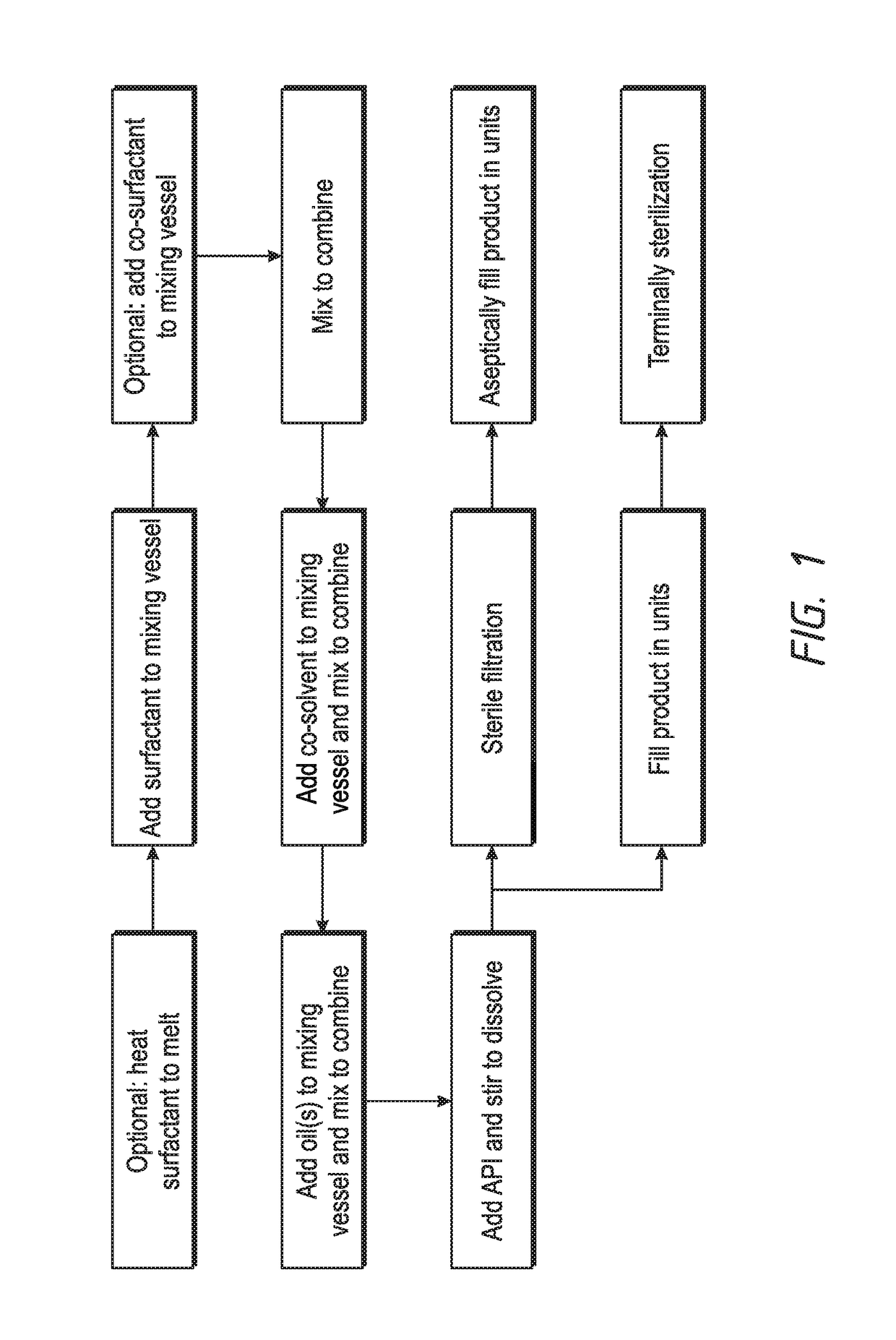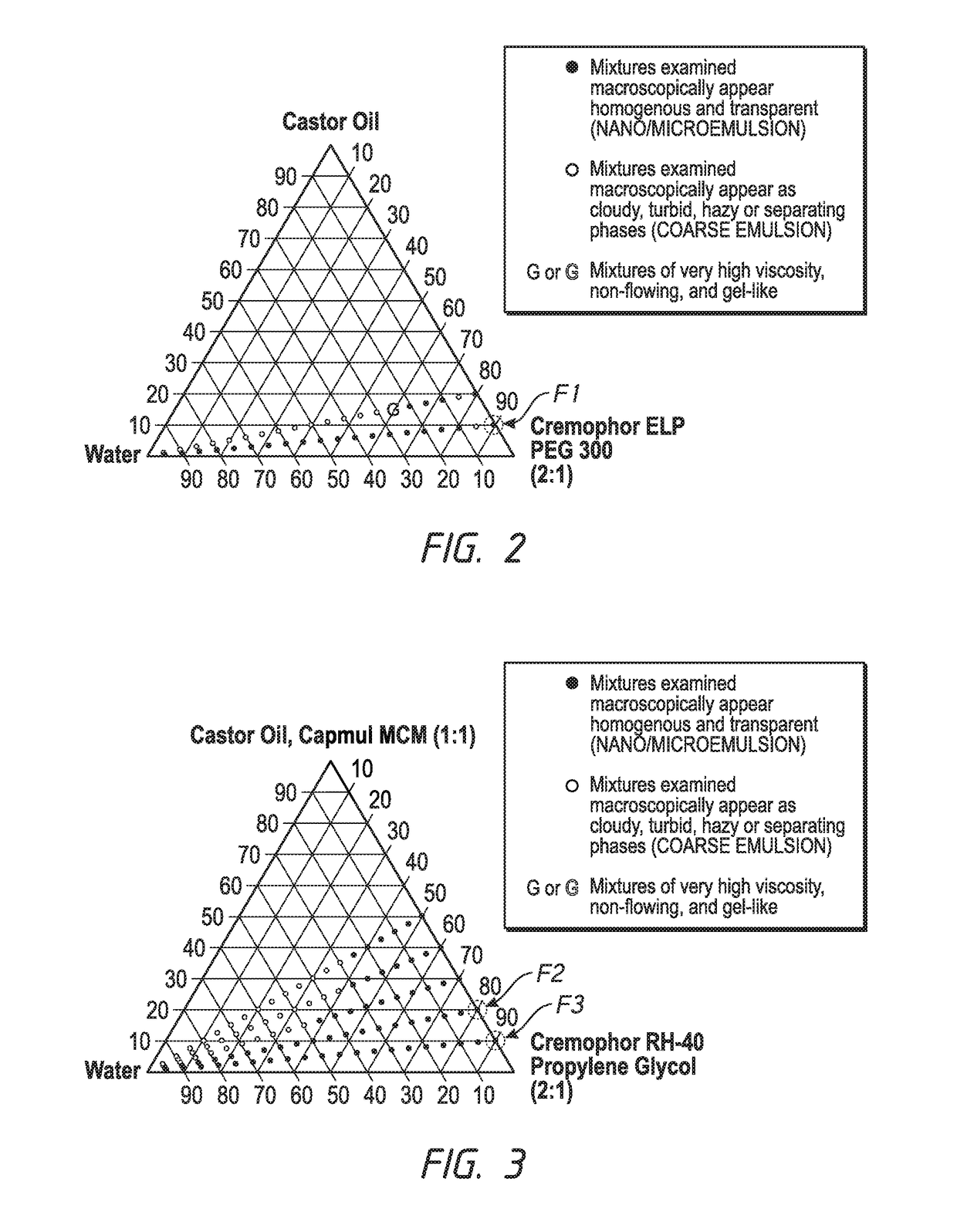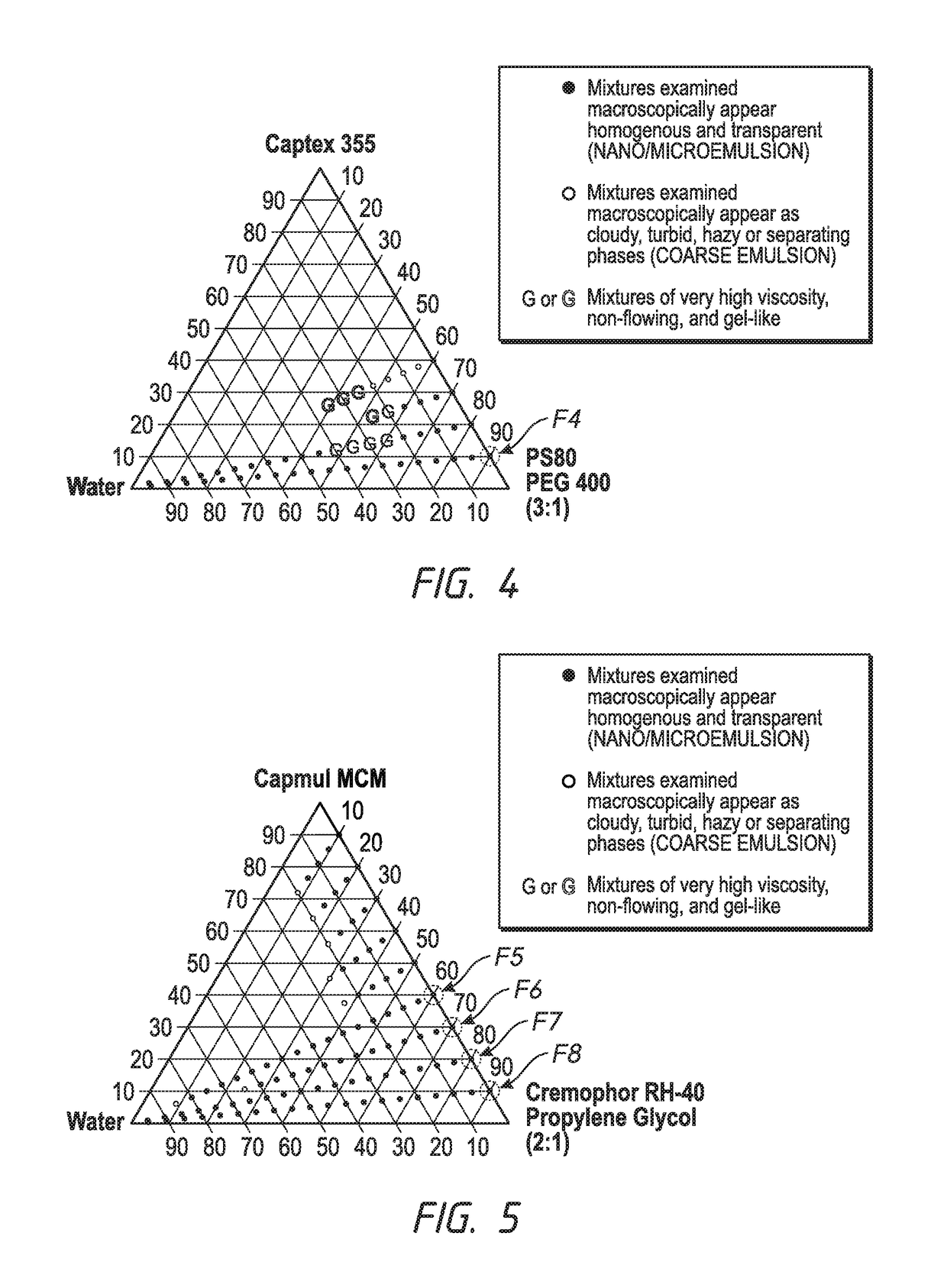Self-emulsifying drug delivery (SEDDS) for ophthalmic drug delivery
a self-emulsifying, drug technology, applied in the direction of drug compositions, antibacterial agents, immunological disorders, etc., can solve the problems of poor permeability across the corneal membrane, short residence time, and observed extremely low bioavailability, and achieve the effect of easy preparation
- Summary
- Abstract
- Description
- Claims
- Application Information
AI Technical Summary
Benefits of technology
Problems solved by technology
Method used
Image
Examples
example 1
[0113]The following example is for a SEDDS formulation where the oil component is a long chain triglyceride from a vegetable source. The ratio of oil to surfactant / co-solvent is varied at either 1:9 or 2:8. The effect of dilution with water up to a final water content of 95% w / w on the appearance of the emulsion can be seen in the phase diagram below in FIG. 2. The surfactant to co-solvent ratio is kept constant at 2:1 so that the effect of increasing oil content on the ability to self-emulsify and generate a clear nanosized emulsion can be isolated. Formulation F1 (Table 2) is selected with a 10% w / w oil content based on the favorable dilution indicated in the phase diagram. Dilution of F1 with simulated tear fluid was subsequently confirmed and showed no impact on nanosized emulsion formation (FIG. 12).
TABLE 2SEDDS FORMULATION FOR EXAMPLE 1 (F1)ConcentrationIngredient(% w / w)Castor Oil10Cremophor ® ELP60PEG 30030
example 2
[0114]The following example is for SEDDS formulations in which the oil component is a long chain triglyceride blended with a medium chain mono- / di-glyceride in a 1:1 ratio. The inclusion of a medium chain mono- / di-glyceride in the oil component is intended to improve the region of nanosized emulsification as compared to using a long chain triglyceride alone. The surfactant to co-solvent ratio is kept constant at 2:1 and the content of the oil is increased from 10% w / w of formulation up to 50%. Dilution of formulations up to a 95% w / w final water content was performed and the results are illustrated in the phase diagram below in FIG. 3. Formulations F2 and F3 were selected and contain 20% and 10% w / w oil content, respectively. The compositions can be seen in Table 3 and Table 4 below. Dilution with simulated tear fluid was also subsequently confirmed and showed no impact on nanosized emulsion formation (FIG. 12).
TABLE 3SEDDS FORMULATION FOR EXAMPLE 2 (F2)ConcentrationIngredient(% w / w...
example 3
[0115]The following example is for a SEDDS formulation containing a medium chain triglyceride, Captex®355, consisting of mixture of caprylic acid (C8) and capric acid (C10) in a 55:45 ratio as the oil component. Formulation F4 is selected from the phase diagram (FIG. 4) on the basis of favorable dilution with water which was further confirmed with simulated tear fluid (FIG. 12). The composition of F4 can be seen in Table 5.
TABLE 5SEDDS FORMULATION FOR EXAMPLE 3 (F4)ConcentrationIngredient(% w / w)Captex ®35510PS8067.5PEG 40022.5
PUM
| Property | Measurement | Unit |
|---|---|---|
| Fraction | aaaaa | aaaaa |
| Fraction | aaaaa | aaaaa |
| Fraction | aaaaa | aaaaa |
Abstract
Description
Claims
Application Information
 Login to View More
Login to View More - R&D Engineer
- R&D Manager
- IP Professional
- Industry Leading Data Capabilities
- Powerful AI technology
- Patent DNA Extraction
Browse by: Latest US Patents, China's latest patents, Technical Efficacy Thesaurus, Application Domain, Technology Topic, Popular Technical Reports.
© 2024 PatSnap. All rights reserved.Legal|Privacy policy|Modern Slavery Act Transparency Statement|Sitemap|About US| Contact US: help@patsnap.com










